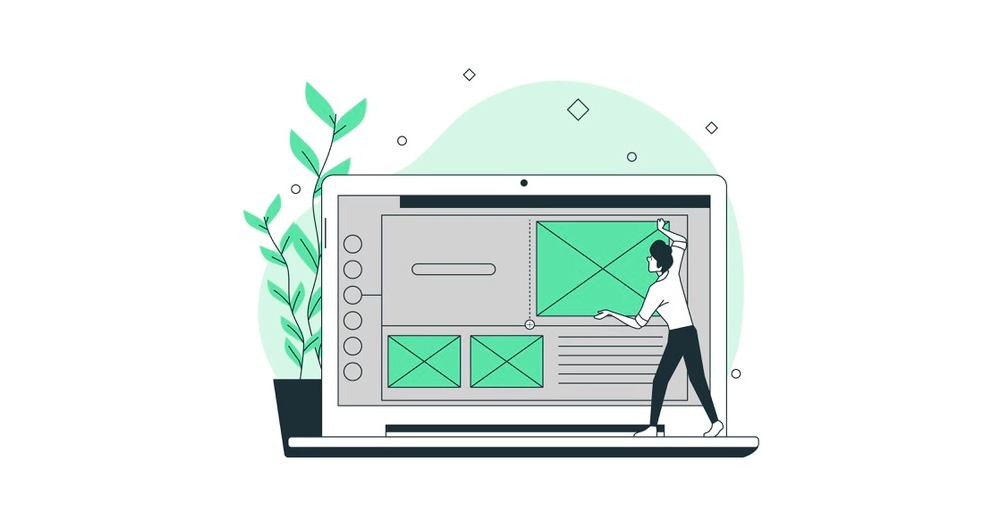A web design is the most important aspect of any modern day marketing strategy. The web design is considered to be the foundation of the entire online and digital marketing. It has to be perfect. It must have to communicate the right value proposition and it must be able to provide an excellent customer experience and customer journey. These days’ businesses and organizations in Dubai and all around the UAE are heavily relying on their websites to establish a better online brand identity and reputation. The customer behavior and market trends have completely changed in past few years. And since almost a decade we are witnessing each year is bringing new trends and require the business to do adjustments accordingly. The year 2021 and the year 2022 will be a very important time, since the regular businesses activities has been resumed, the businesses need a better strategy. A fresh web design could be a game changer.

The studies have shown that it requires only a few milliseconds to build an impression of a brand in the visitor’s mind when they first land on a website. This has a huge impact on the brand and its reputation. The website has two major components one is the web design and the second is the content, both should work in harmony to deliver a remarkable customer experience and customer journey. The design builds the first impression and the content make it last. The businesses treat the web design and website content as two different things, but that is not true. Consider the web design as the structure of a building and the content as its interior. The tenants will only come if the both the structure and interior are good. Similarly for the website the web design and the content both from a user interface to provide good user experience and convenient user journey.
Here is a guide that will help you in choosing a good web design in 2021:
Step 1. Set Objectives and Goals
There are several compelling reasons to choose a new web design for your website in 2021. It requires a little bit of research to determine what is the purpose of changing your existing web design?And what you want to achieve from choosing a new web design? Here are a few questions that you should ask to yourself to set your goals and objectives for the new web design:
- Do you want to generate more leads from your website?
- Do you want to increase your website sales or do you want to increase the website conversions?
- Do you want to reduce the bounce rate?
- Do you want to increase your website traffic?
- Do you want to improve the user experience?
- Do you want to make your website mobile friendly?
- Do you want to update your website content?
- Do you want to add multimedia content?
- Do you want to launch a new brand identity?
- Do you want to improve functionalities of your website?
If you say ‘yes’ to any of the above questions or to multiple questions, then your new web design should be chosen to achieve your goals. For example if you want to generate more leads from your website then your web design should be more business oriented, the homepage design and the internal pages should be optimized to achieve maximum lead generation. If you want to increase your website sales or online conversions, then the web design should be prepared to focus on customer journey and the purchase cycle should be improved to improve website conversion rate.

Similarly if you want to increase traffic, or want to perform well in the search, you need a search engine friendly or SEO friendly web design. If you want to enhance mobile experience you should choose a responsive web design. If your content is outdated or you want to update the content or want to add multimedia content in the website then the design must be designed in way that it can support the new content very well. If your brand identity got changed then the entire website and online presence should be updated as per the new brand identity.
Read More: Why Your Small Business Needs a Website?
Step 2. Check if the Web Design have all the Right Ingredients
Once you have finalized the goal and objectives of choosing a new web design, the next step is to check if the web design you are selecting have all the right ingredients or not? That is very important. The problem is that there is no separate checklist available for each goal. However, there are certain generic features which are absolutely necessary for each and every web design and these features can also help business and organization to achieve any goal. Here are the important features and functionalities that each and every website must have to be successful in 2021-2022:
Excellent Homepage Design
The homepage is a web design is equal to an engine in a car, without a healthy and strong engine a car couldn’t go far. That is because the homepage is the page which gets the most of the website traffic, a majority of the online website traffic lands on the homepage first and then navigates to the inner pages. The homepage of a web design acts as a gateway or reception of the business. It would be the first impression for a huge chunk of your prospects and new visitors. The homepage can be divided into various sections or chunks. Usually businesses have a long vertical scroll homepages in Dubai and all around the UAE and that is also very trendy now a days. Here are some sections of the homepage and what you should be looking to have in them:
- Header: The header of a website is the top area having business logo, menu and navigation, and in some cases the contact details too.
- Hero Area: This area is referred to the areas under the header, usually this area contains an image slider or a video content in it. This is the area which got the most focus when a user land on the website, so it has to have great imagery and attractive taglines.
- Body: The body is the section that starts underneath the hero area and stretched towards the last section of the page. It contains introduction, products/services listing, other appealing content, trust signals and in some cases contact forms too.
- Footer: The footer is referred to the very last section of the web page. It contains contact details, useful internal links, trust markers, and in some cases small contact forms too.
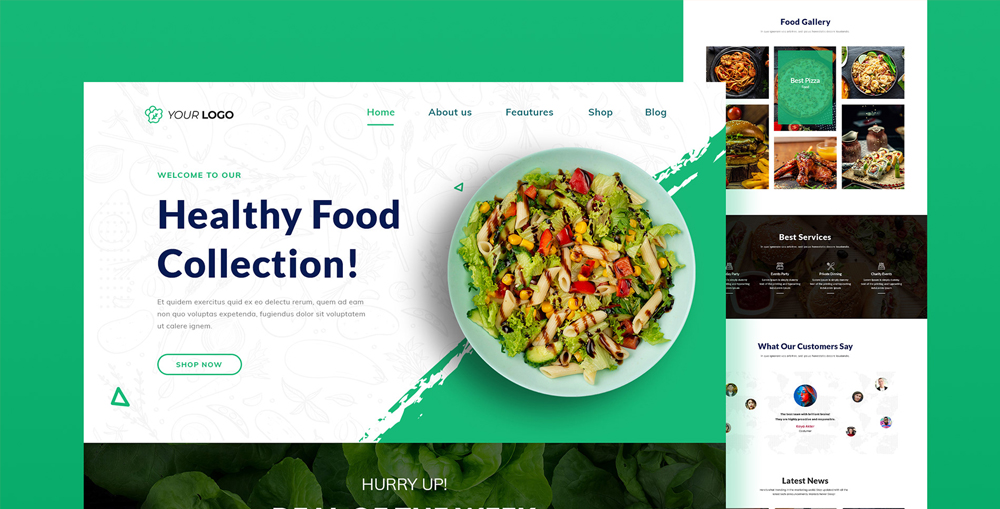
Each area of the homepage should offer certain features and the entire homepage content should be organized in a way to form a smooth user journey from top to the bottom of the web page. Apart from these sections the homepage must have certain features which will make it appealing and effective. Here are some key elements and features that a homepage web design must have:
1. Prominent Branding Elements
The branding is a very powerful element, a brand is recognized with their branding. For a web design and the homepage design the branding should follow the logo of the business or organization. The logo is the brand identity, customers and audiences knows a brand by its logo, for example think of the McDonald logo or KFC logo or Amazon Logo, whenever you see them you immediately understand what it means and which business it will be. Similarly at a homepage the logo should be visible and the logo’s theme should be projected throughout the web design.
2. Attractive Color Scheme
The color scheme is also an essential part of the branding. The colors can make or break user experience, too light color makes it harder to read, too dark colors make the look dull, the color scheme should have a perfect balance and the colors should clearly represent the logo and branding theme. The homepage color scheme and theme will be the theme of the entire website, so it has to be unique, appealing and pleasant for the users.
3. Content, Images and Multimedia
The textual content, images and multimedia content should clearly portray the brand, rather than having images and multimedia as a filler these things should be part of the customer journey and user experience. The images and multimedia content should represent the brand, it should communicate the brand’s vision, mission and value proposition effectively. The textual content should have attractive taglines, accurate and short descriptions and very simple and easy-to-understand language.
4. Unique and Highly Readable Typography
The typography or fonts are the most important thing in any web design. Whenever a user land on a website they seek some information or a solution to their problem. The images, branding and graphics can help increase their engagements but the textual content will remain the most powerful influence on the visitors’ decision. The typography or fonts should be unique and highly readable.
5. Compelling Call to Action (CTA)
The call to action is the most important part of a user interface. If a business wants the visitor to perform a certain action the CTA or call to action is used. For example if the business wants the visitors to sign-up or to make a purchase or to request a quote or any other required function that can converts them, the CTA is used. It has to be clearly visible, repeated in multiple places strategically and it should have eye-catchy tag on it.
6. Easy Navigation and Internal Links
The homepage is just a doorway the rest of the website content is always scattered on the internal pages. That is why we use website navigation to let the users to reach to the information that is buried in the internal pages. The homepage should have a menu which can let the user to navigate to internal pages easily. All the menu items should be organized and easily accessible. The homepage can also have internal links on multiple sections as the body section of the homepage can have a lot of wide space which can be have elements, graphics or sections that can be linked with internal pages. This significantly increase the user experience and website performance in the search engines.
7. Trust Signal
The homepage should be able to gain trust of the visitors. There are several trust signals which vary from business to business but ideally the homepage should have at least three different and very prominent trust signals. For example, the customer reviews or client testimonials, the security badges, the business partners’ logos and the client’s name are a few of the very popular trust signals.
8. Business and Team Information
The business information, story, about section, mission and vision statements and such details are very important and help gaining trust of the visitors and are also very helpful in building brand reputation. Some business often publish their team’s details on the website, if not all of the employees at least the CEO or MD or top management is enough. The trust signals and business information are very helpful and improve customer’s trust and confidence on the brand.
Separate Internal Pages
There was a time when the single page websites gain traction, but such websites are only impactful for a very specific businesses and industry sectors. Only the multi-page websites are the ideal solution which is equally impactful for all industries and business sectors. It is important that the web design you choose have separate internal pages designed dedicatedly to serve a particular purpose. For example the About page is used to provide business background and information about the business and its top management. It also includes mission and vision statements and future plans of the business along with some details about their journey and success. The products/services pages are separate, the category page lists all the internal or sub-categories and the listings of the products and services offered by the business or organizations.

The dedicated product or service page is associated to a single product or service and often more customer centric and focused on the customer journey. The PR page or Blogs are for news, information, press releases and such publications. The contact page is to provide all the contact details, location maps of the business and its regional offices or branches and so on. All pages are different and serve a specific purpose. Hence it is important to have separate internal pages for each purpose. The header and footer sections are usually common throughout the entire website and the web design of the inner pages follow the same color scheme, fonts and typography, and overall theme of the homepage.
Read More: 5 Strategies to Build Online Brand Identity in 2021
Responsive and Mobile Friendly Web Design
The smartphones and mobile searches have already surpassed the traditional computers and laptops. The modern day audience is heavily focused on smartphones. The rise of powerful smartphone and mobile devices, availability of high speed internet, and social media have completely changed the modern day marketing landscape. Each and every web design has to be responsive and mobile friendly. A responsive web design is programmed in a way that it can automatically detect the device and platform it is being accessed from and without even letting the user notice it the web design renders and rearrange itself to fit as per the screen size. This is what we called responsive web design. There are several other aspects too, such as the responsive web design should ensure the unified customer journey and customer experience on both the regular computers and also on the mobile devices to make sure the customers never get confused of anything or so. The responsive web designs are also ranked higher in the search and can get more organic website traffic from the search engines.
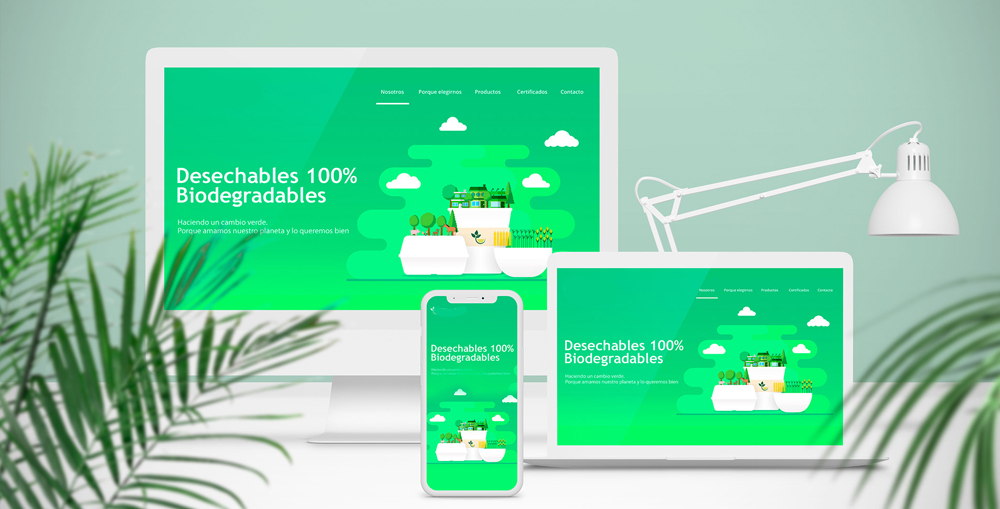
Read More: 6 Tips to Use Social Media for Local Business
Step 3. Make sure the Web Design is SEO Friendly
Once all the features are selected the next step is to make the web design SEO friendly. The SEO or Search Engine Optimization is making a design more in-line with the search engine guidelines and standards. The major search engine guidelines are set by Google since it has 92% to 94% of the search market share, rest of the search engine also follows the same standards. The SEO friendly web design must offer the content and design which is readable for the search engine. The search engines like Google, MSN and Yahoo use automated software programs, called crawlers or spiders these data crawlers go through each website and its internal pages, usually they land at the homepage and from there they find links for the internal pages and scan them too. The purpose is to enlist all of the available websites and their internal pages and content. The search engine then process these links and their content through artificial intelligence based algorithms who decide a primary topic or subject of a webpage and then index them in their broader repository. Whenever someone searches in the Google or any other search engine the search result page returns the links from that repository.
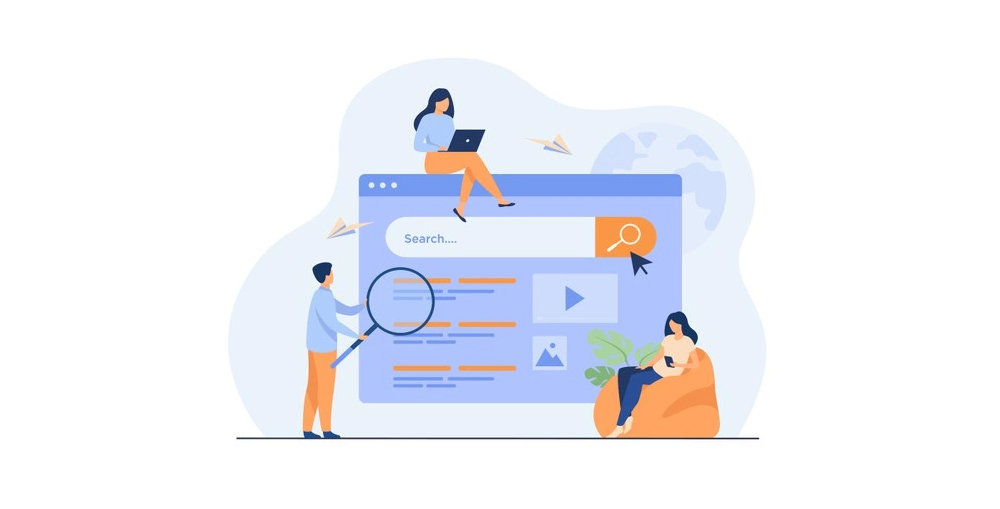
The position of those links is also controlled by these algorithms, the Google and other search engines rank different websites and web pages on the bases of their content, web design, user experience, loading speed, mobile experience and a lot many other parameters. In order to rank well in those search result pages the web design must complies with the rules and standards set up by the search engines. The basic rule is to make a web design which offers good user experience and it’s all content and links should be readable by the website visitors as well as by the search engine data crawlers. Some web designs use technologies and source code which is unreadable for these data crawlers, so for the crawlers there is no content or link but in reality there is a link and content available for the user. This could completely ruin the SEO and search engine rankings of a website. So, the web design must use programming technologies and designing tools which complies with the search engines and let them read the web page and its source code as well. This is very important as for an average website almost 70% to 80% of its traffic is coming from the search engines, which is completely organic. The organic website traffic is absolutely free and can be a game changer for a business’s online success.
Read More: Why businesses need Mobile Apps?
Step 4. Check the Loading Speed of the Web Design
The loading speed of a web design is critically important it affects the user experience and it also affects the SEO. If a web page take more than 3 to 5 seconds to load, the chances are almost 80% of the users will leave without waiting and search for other websites. Does this means the customers are impatient? No, it doesn’t mean the customers are impatient, but almost all major website which are being used by the ordinary people loads within the 3 to 5 second range. This sets up a trend, and customers now expect the same from your webpages too. There are several factors that can impact your web design’s loading speed, such as:
- Images/Media Size
- Older Image Formats
- External Resources in the Web Design
- Too Long Web Pages
- Poorly Organized Source Code
- Older Technologies and Frameworks
- Slow Server and Content Delivery Network/System
- Incompatibility with the Modern Browsers
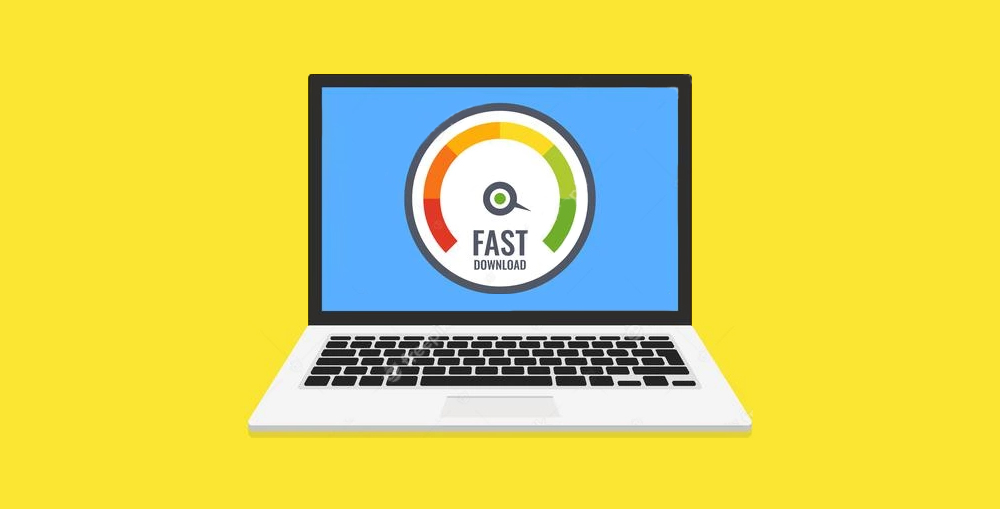
These are the most common mistakes that usually a web designer made. Make sure your web design doesn’t have any of these issues. Apart from the hosting speed, rest of everything is related to the web design. These days ordinary image formats such as PNG or JPEG are being replaced by SVG and WebP, etc. The videos can also be optimized in similar fashion. The programing and scripts that are running in the background could also impact the loading speed. Some web designs use a lot of external resources. It means that the images or fonts or scripts or CSS the web page is running on is not hosted in the same server where the entire website is being hosted. This could significantly increase the load time. The loading speed of the web design should be optimized by using modern techniques and tools. The web design should be able to load as quickly as possible or at least its loading speed should be equal or less than five seconds.
Read More: What is the difference between hosting, cloud and data centers?
Step 5. Check the Compatibility with the Content Management System (CMS)
The Content Management System or CMS is a software tool that is used by webmasters to publish content on the websites. The CMS is important for modern day’s websites as the websites are also serving as a digital communication tool with the customers and broader audiences. The businesses and organizations have to keep their websites up-to-date. Moreover the businesses and organizations also require to amend/update existing content along with new publications. A CMS makes the website management very simple and convenient for the non-technical or non-programmers. There are so many different CMSs available in the market. Some of them are free and open source some are paid. No matter which CMS a business is using, it is important that the new web design they choose is compatible with their existing CMS. If you are a new startup or looking for a complete revamp of the entire website, you can also choose a CMS. For businesses and organizations who are operating at a medium level, the free and open-source CMS such as WordPress, Joomla and Drupal are a good option. For business working on a large scale and require intensive work on the websites and need high-end security, it is always good to acquire a closed-source and customized CMS, such as RSI CMS [LINK].
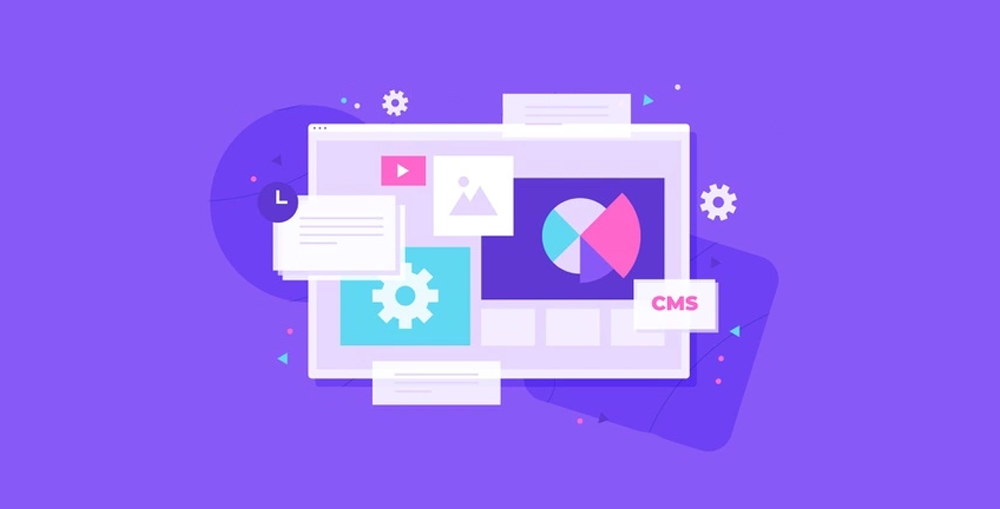
The web design you are choosing should be compatible with the CMS you already have or are planning to go with. If a web design is not compatible with a CMS or your desired CMS then you will end up acquiring skilled professional or outsourcing the service in order to be able to keep your website up-to-date and do updates, changes and publications on the website. Which is very expensive and could raise your operational cost to a lot. The CMS will allow you to do all those tasks internally, anyone with a little bit of training and basic computer proficiencies can handle a website using a content management system or CMS. It is crucial that the web design you are choosing is not only compatible but allows a certain level of control too through the CMS so you would be able to update all the dynamic parts of the website.
Read More: How to Utilize Expo 2020 for Your Business Growth
Step 6.Check Cost-Effectiveness
Obviously the cost is one of the most important aspect of any project. For a web design there are several factors that can increase its cost. For example if you are going for a customized web design, it will be costly comparing to choosing an existing web design template and customizing it as per you needs. Another most expensive part of a web design is its content, both textual and multimedia (images, videos, animations, etc). Hire a professional content writer and keep only the necessary pages in the website, do not add unnecessary pages, it will increase the cost. If your website is multi-lingual then the cost would be even higher if you will add unnecessary pages in the website. For the images and multimedia do not purchase everything. There are millions of free images and multimedia available on the internet, it takes time to find required images and multimedia from those repositories. Whenever and wherever possible go for free images and multimedia. For the products and services images, it is better to use stock images by vendors or general images, which in most of the cases are free. Hiring a professional photographer or videographer could increase the cost a lot.

A good web design is always programmed in a way that it optimizes the loading speed. Hence high-end or cloud hosting is not needed. The website hosting itself is a very expensive component. If a web design is prepared by professionals and is optimized for the loading speed the hosting requirements are also less. Any medium or small size hosting could also provide good loading speed. But if the design have heavy media files, external resources, older file formats, unorganized resources and such deficiencies the high-end hosting is required which is five to ten times expensive than the normal average hosting. So, the web design also have a huge impact on the initial and operational cost of the website.
Read More: How to Get a Cost-Effective Website for a Small Business
Conclusion
The marketing has adopted to the digital and these days the digital marketing have already dominating the industry. The businesses and organizations in Dubai and all around the UAE are focusing heavily in digital domain. The web design is the most important part of online marketing strategy. A website visitor takes only a fraction of a second to build an impression of the brand in their mind on the bases of the web design. This has a huge impact on the overall customer experience and perception of the brand. The market trends and customer’s needs kept changing all the time, hence the businesses also have a constant need to update their websites. In fact after some time a full revamp of the web design is required to keep up with the market trends. This guide is prepared to let our audience understand about the web design and what is the best way to choose web design in the year 2021. In fact we are anticipating that this guide will remain relevant for a few coming years. We have covered the basics and most fundamental aspects of the web design, if a business or organization follows these steps they can easily choose a right web design for their websites. If you still have any doubt, or if you need help with your web design project feel free to contact us through our Contact Us page or leave a comment in the comment box below and we will get in touch with you soon.
Check out this blog: 5 Signs You need a New Web Design for Your Business Website
